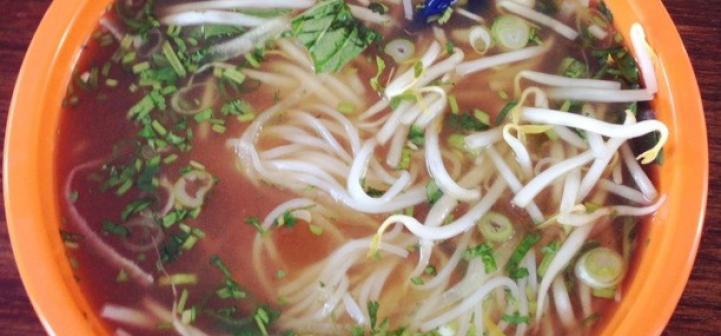
With a background in the hotel and restaurant industry, and more than twenty years of work in child nutrition under his belt, it’s no surprise that Food Service Director Doug Davis has transformed the K-12 cafeteria scene in Burlington, Vermont. As a resettlement area that welcomes refugees and other New-Americans, Doug noticed that the food being served in Burlington schools didn’t reflect students’ cultural needs. As the community grew more diverse, many children in the Burlington public school district were limited in what they could eat in school. For example, students with cultural or religious dietary restrictions they couldn’t eat the hot dogs or pepperoni containing pork, and these foods were often not well labeled on the lunch lines. Doug also saw an opportunity to improve community involvement – he wanted families to understand that “they had a voice in their own program” as a way to “make it more welcoming.”
In 2003, with the support of his strong team of staff, Doug began an initiative to increase the cultural representation of foods in the lunchroom, with a particular focus on increasing the number of options for meatless proteins. Now, his cafeterias boast a variety of cook-to-order foods, including a full salad bar, a pho bar, and stir fry, pasta, and burrito stations, all of which require fresh veggies- a great way to incorporate more nutritious foods into the students’ diets! He noted that these foods take a bit longer to prepare, but also recognized that students are willing to wait this extra time, and attributes this to the appeal of students having a “more active role in their own choices.”
Doug also pointed out an unintended benefit of the new menu changes: the “relationships students make in line.” He also discussed the increased confidence he has observed in the students. Recounting a specific memory, he mentioned he has overheard students who work in the high school gardens say to other students in line, “You need to try that, I grew that; those tomatoes just came out of the garden yesterday!” Similarly, he has noticed that this program has become an avenue for students to express pride in their culture, as it has opened up a dialogue between students about ethnic foods. Often, students will compare the cultural meals of the lunchroom to the (perhaps more authentic) versions they are used to eating every day at home.
Parental involvement is key, and Doug encouraged parents to go to their children’s school and eat a meal there to get the full experience. Using this firsthand experience, Doug would like to see parents then consider being on the school’s wellness committee, which could only add to the cultural diversity represented in the cafeteria.
His advice for other schools wishing to implement a similar program? Involve administration and be able to report on the value of these efforts. Engage community health workers in order to integrate community efforts and increase the number of advocates for your program. And finally, “Network with other food service directors!” He welcomes the opportunity to share successes among schools nationwide, because after all, “we can’t steal each other’s customers!”
Contributors
Catherine Spivak and Alisha Gaines, Cornell University, Division of Nutritional Sciences
Resources
Enriching School Lunches with Greater Nutritional and Cultural Values, eXtension.org
Massachusetts, Alex Freedman Foodcorps. SERVING UP TRADITION: A Guide for School Food in Culturally Diverse Communities (n.d.): n. pag. Food Corps Massachusetts. Web. 19 Oct. 2016.
Massachusetts Service Organizations Drive Initiatives to Provide Healthy, Culturally Diverse School Food, eXtension.org
The Culture of Cambridge: Successfully Incorporating Culturally Appropriate School Meals, eXtension.org
“Pho!” by AForestFrolic is licensed under CC BY 2.0
